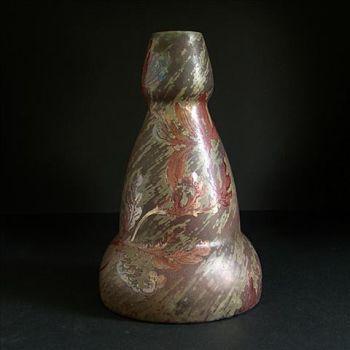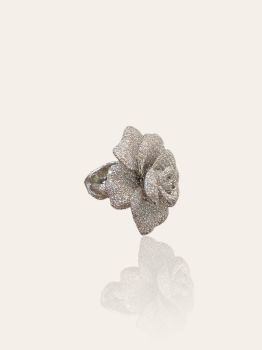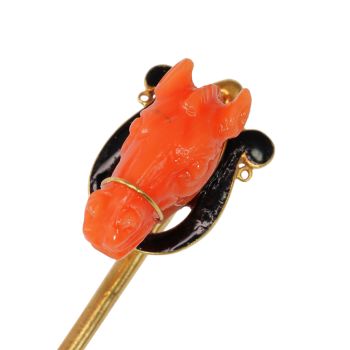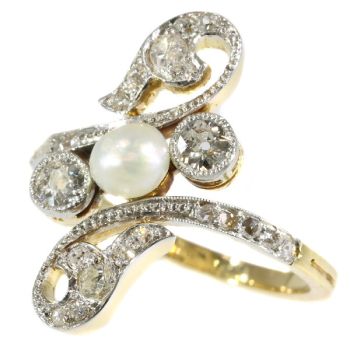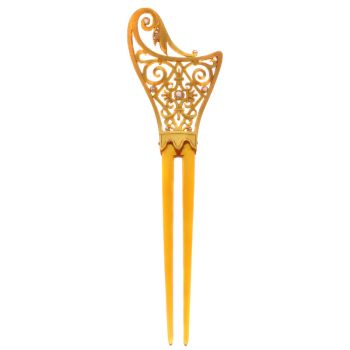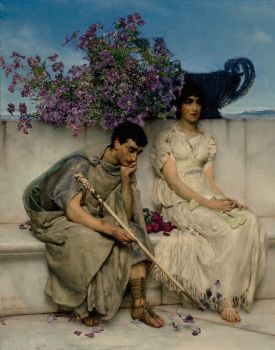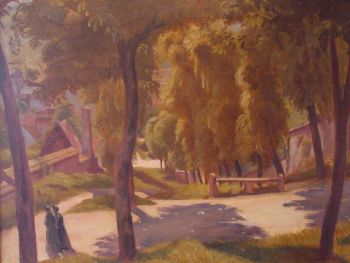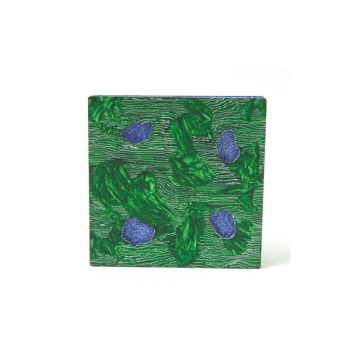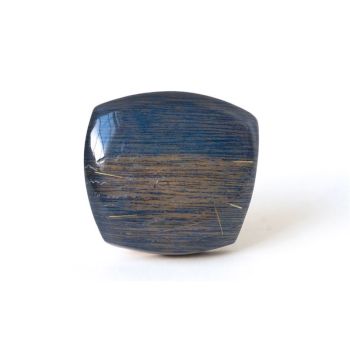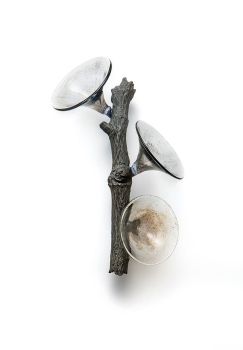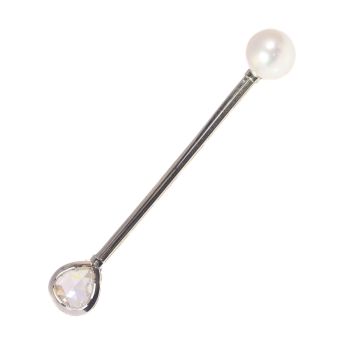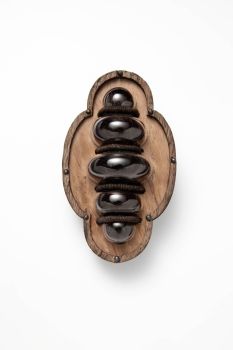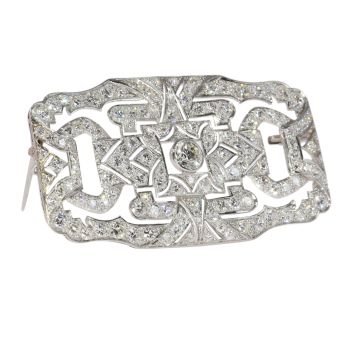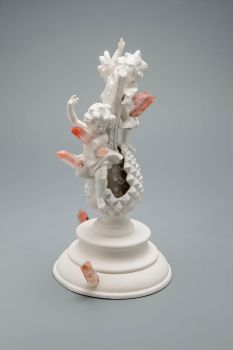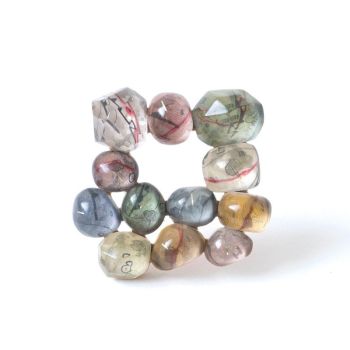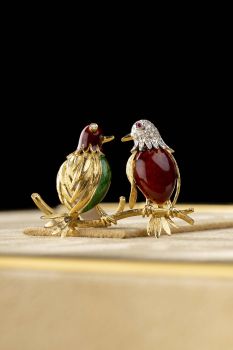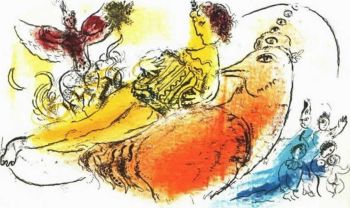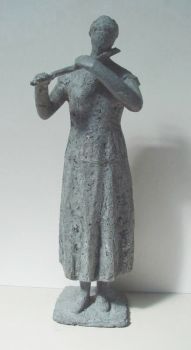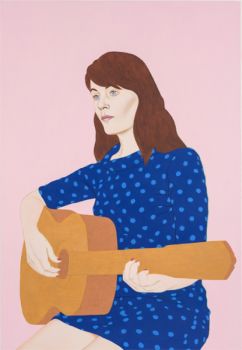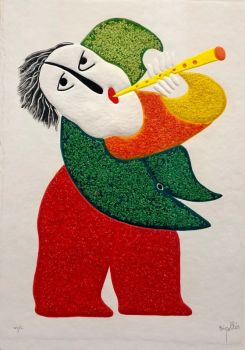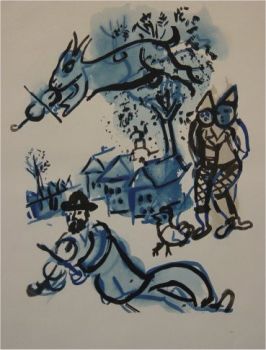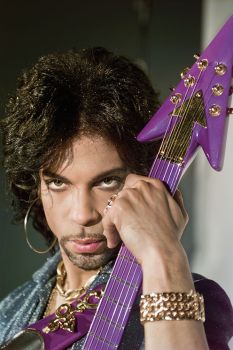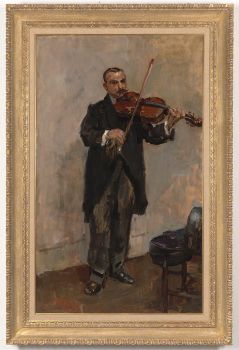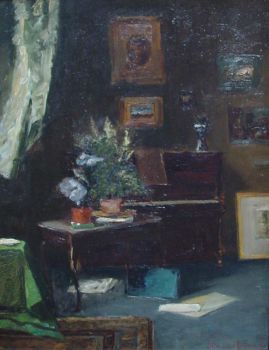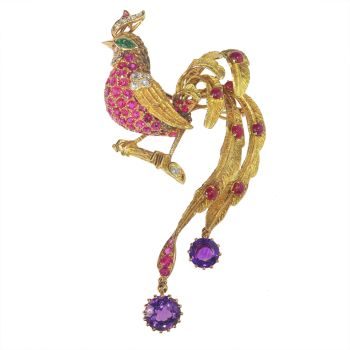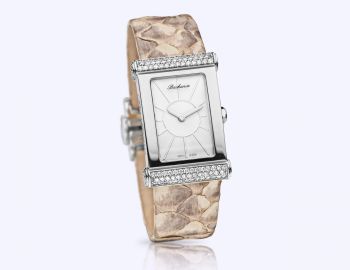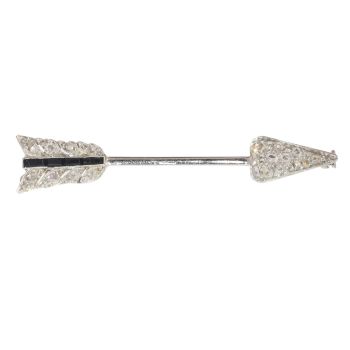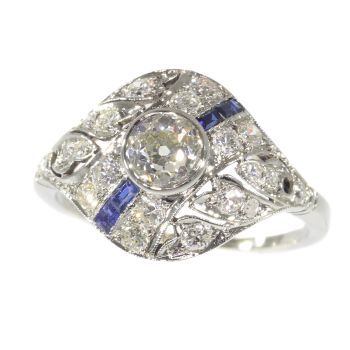Mandolina ou domra antigo broche russo com diamantes lapidação rosa e esmalte 1910
Artista Desconhecido
DiamanteOuroPrataGemstone
€ 11.500
Adin Fine Antique Jewellery
- Sobre arte
94 rose cut diamonds all encrusted in silver carry you through this 14K red gold Russian Victorian brooch, starting from the stringed musical instrument's head with miniature tuning pegs and via the draping strap over to the body embellished with adiamond rim and blue enamelled inlay frills. Besides the diamond sound hole and bridge, it's the eight cabochon cut rubies in the nut and the bridge pins and the two seed pearls next to the chords that make this mandolin reach its crescendo.
Antique jewelry object group: brooch
Condition: excellent condition
- (more info on our condition scale)
Country of origin: Russia (Transcaucasia)
Style: Victorian - Victorian decorative arts refers to the style of decorative arts during the Victorian era. The Victorian era is known for its eclectic revival and interpretation of historic styles and the introduction of cross-cultural influences from themiddle east and Asia in furniture, fittings, and Interior decoration. Victorian design is widely viewed as having indulged in a regrettable excess of ornament. The Arts and Crafts movement, the aesthetic movement, Anglo-Japanese style, and Art Nouveaustyle have their beginnings in the late Victorian era.
- See also: Victorianor more info on styles
Period: ca. 1910
- (events and facts in 1910)
Source of inspiration: Musical instruments
Theme: Mandoline, or perhaps more likely the four string domra.
Material: 14k red gold and silver, see also: The silver on gold technique
- (more info on precious metals)
Technique: Enamelling is an old and widely-adopted technology. The ancient Egyptians applied enamels to pottery and stone objects. The ancient Greeks, Celts, Russians, and Chinese also used enameling processes on metal objects. Enamel is the colorful result offusing powdered glass to a substrate by firing, usually between 750 and 850 degrees Celsius. The powder melts and flows and hardens to a smooth, durable vitreous coating on metal, glass or ceramic. According to some sources, the word enamel comes fromthe High German word smelzan (to smelt) via the Old French esmail. Used as a noun, "an enamel" is a usually small decorative object, coated with enamel coating, such as a champlevé or a cloisonné (different techniques).
Diamonds:94 rose cut diamonds. We do not have the weight of the diamonds which is normal in our trade when it comes to rose cuts.
Precious stones: eight cabochon cut ruby. We did not check if the ruby is lab produced or not as this information has no influence on the value of this jewel. Natural rubies and lab produced rubies were both used in this era, rather more for their effect than for their intrinsic value.and two seed pearls
- (more info on precious stones)
Birthstones: Diamond is the birthstone (or month stone) for April, ruby for July and pearl for June.
- (more info on birthstones)
Hallmarks: Pre-revolution Russian hallmarks for 14K gold. Hallmarked in Transcaucasia, known because of the letter 'O' in the hallmark. This hallmark was used between 1908 and the Russian Revolution in 1917. Furthermore we found a French control mark thatindicates that the piece has been imported to France....
If this piece could only talk... What amazing story would we hear.
- (more info on hallmarks)
Dimensions: Width 6,13 cm (2,41 inch)
Weight: 11,60 gram (7,46 dwt)
Reference Nº: 14185-0013
Copyright photography: Adin, fine antique jewelry
- Sobre artista
Pode acontecer que um artista ou criador seja desconhecido.
Algumas obras não devem ser determinadas por quem são feitas ou são feitas por (um grupo de) artesãos. Exemplos são estátuas dos tempos antigos, móveis, espelhos ou assinaturas que não são claras ou legíveis, mas também algumas obras não são assinadas.
Além disso, você pode encontrar a seguinte descrição:
•"Atribuído a …." Na opinião deles, provavelmente uma obra do artista, pelo menos em parte
• “Estúdio de…” ou “Oficina de” Em sua opinião um trabalho executado no estúdio ou oficina do artista, possivelmente sob sua supervisão
• "Círculo de ..." Na opinião deles, uma obra da época do artista mostrando sua influência, intimamente associada ao artista, mas não necessariamente seu aluno
•“Estilo de…” ou “Seguidor de…” Na opinião deles, um trabalho executado no estilo do artista, mas não necessariamente por um aluno; pode ser contemporâneo ou quase contemporâneo
• "Maneira de ..." Na opinião deles, uma obra no estilo do artista, mas de data posterior
•"Depois …." Na opinião deles uma cópia (de qualquer data) de uma obra do artista
• “Assinado…”, “Datado…” ou “Inscrito” Na opinião deles, a obra foi assinada/datada/inscrita pelo artista. A adição de um ponto de interrogação indica um elemento de dúvida
• "Com assinatura ….”, “Com data ….”, “Com inscrição ….” ou “Tem assinatura/data/inscrição” na opinião deles a assinatura/data/inscrição foi adicionada por outra pessoa que não o artista
Você está interessado em comprar esta obra de arte?
Artwork details
Related artworks
- 1 - 4 / 12
- 1 - 4 / 24
- 1 - 4 / 24
Carel Nicolaas Storm van 's Gravesande
My studio in Bruxelles1841 - 1924
Preço em pedidoKunsthandel Pygmalion
1 - 4 / 14Jean-Claude Champagnat
French 18K gold vintage 1960's bejeweled bird of paradise brooch by Jean-Claude Champagnat1960
€ 12.500Adin Fine Antique Jewellery
 Com curadoria de
Com curadoria deDanny Bree
1 - 4 / 24- 1 - 4 / 12








